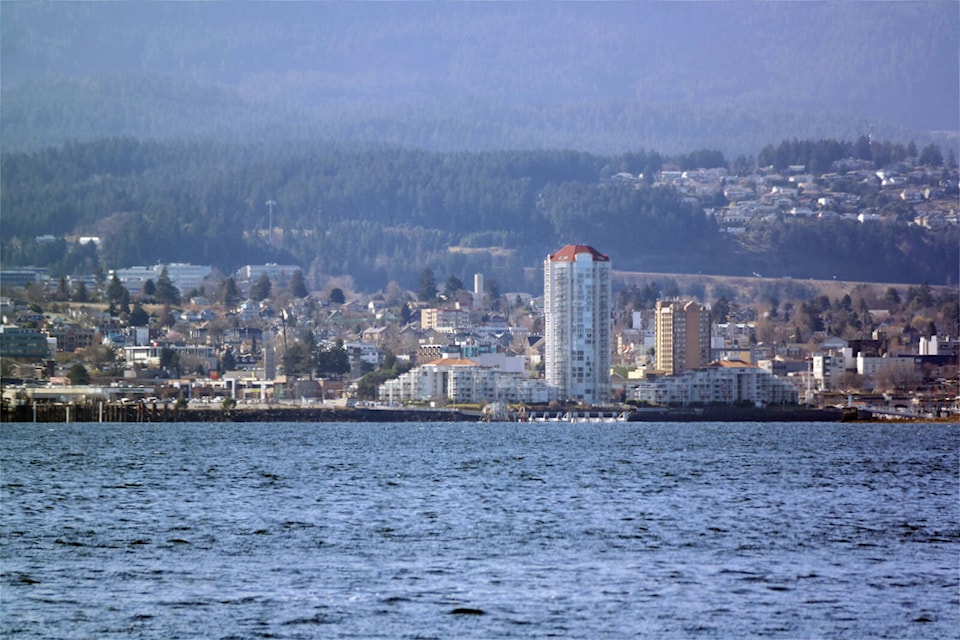Nanaimo’s growth will present both challenges and opportunities, says the City of Nanaimo’s economic development officer.
Amrit Manhas made a “state of the Nanaimo economy” presentation at a city council meeting Monday, April 4, and reported, for example, that housing starts are up and that growth of the 25-44-year-old age demographic is predicted to outpace that of the 65-plus population in the coming decade.
The report reviewed approximately 30 indicators such as gross domestic product, demographics, business, development, housing, real estate, the local labour force, income and tourism to give a picture of Nanaimo’s economy and the directions it could take in coming years.
Nanaimo’s population growth rate during the period covered by the report ranked among the highest in Canada.
“According to the 2021 census, Nanaimo was in the top five fastest-growing urban centres in Canada … our growth rate was twice as fast as the nation’s growth rate,” Manhas said.
From 2016 to 2021, Nanaimo’s population grew 10.3 per cent or about 9,400 people and is projected to add just shy of 12,000 more people, about 12 per cent more, by 2026.
Manhas said from 2016 to 2021, the number of dwellings in the city also grew by about 10.4 per cent.
READ ALSO: Census shows Nanaimo is one of Canada’s fastest-growing metropolitan areas
“So, what does all this mean in terms of implications? Well, growth can provide both opportunities and challenges,” she said. “Newcomers increase the demand for retail and personal services, which helps out our existing businesses, but growth can also strain existing infrastructure … and, of course, as you all know, we’re planning for that growth now with the ReImagine Nanaimo process.”
The bulk of population growth in Nanaimo, 3,617 people in 2021, was due to immigration from other provinces. Manhas said over the next decade the 25-44-year-old age category of the population is expected to grow by 25 per cent. The demographic shift will lead to structural changes in the economy because a younger population demands different services and amenities, such as nighttime entertainment and schools, and a growing population will also mean prioritizing for investment in infrastructure and housing.
In 2021, Nanaimo had 6,214 licensed businesses, of which the largest portion, 1,219, were in the construction sector, followed by professional, scientific and technical services, 786, and the retail sector with 777 licensed businesses. Home-based businesses also represented 41 per cent of businesses in Nanaimo in 2021 – a four per cent increase since the start of the pandemic.
“The largest growth, in terms of business licences, was in the health care and social services sector as well as retail,” Manhas said. “The largest declines [included] hairdressing places, personal training, those kinds of services, arts and entertainment … but these fluctuations, they really reflect the impact of COVID-related restriction on some of the hardest-hit sectors in the economy and we expect this to readjust again as the economy starts to improve.”
Building permit values for 2021 were the second highest on record at $272 million, a 12 per cent increase over the previous year, driven by non-residential, industrial and public projects. Seventy-five per cent of new housing starts were for apartment-type dwellings. New housing starts, sparked by record-breaking housing price escalation of 22 per cent in 2021, jumped 50 per cent to 1,036.
Nanaimo’s unemployment rate dropped from 9.1 per cent in 2020 to 6.1 per cent in 2021, but the local labour force also shrank by 1.6 per cent and demand for workers has outgrown supply.
Overall student enrolment at VIU declined by 12.5 per cent in 2020 and international student enrolment plummeted by 55 per cent, blamed on COVID-19 travel restrictions.
To learn more about the report and economic development in Nanaimo, visit www.nanaimo.ca/doing-business/economic-development.
READ ALSO: City of Nanaimo creates framework for new economic development corporation
READ ALSO: Infrastructure, internet, industrial land key to Nanaimo’s economic development strategy
READ ALSO: Nanaimo’s recovery task force recommends pride of place, strategic investment
READ ALSO: City council dissolves Nanaimo Economic Development Corporation
photos@nanaimobulletin.com
Like us on Facebook and follow us on Twitter
